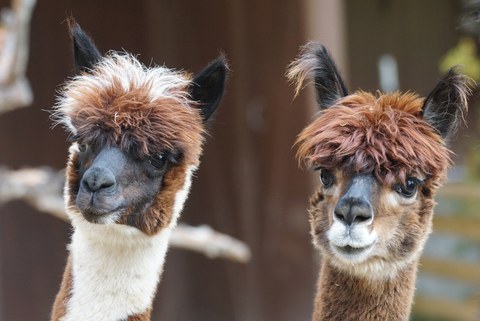Sep 21, 2023
Animals and Money: Alpacas - Lifesavers in Cancer Immunotherapy

Alpacas produce special antibodies, that can be promising for the treatment of cancer.
Cancer is one of the most widespread diseases worldwide and new tumor types evolve over time, creating a global health care challenge1. Several treatment approaches, such as surgery, drug treatment, external radiation therapy and immunotherapy are available. Cancer shows an increasingly diverse disease pattern. Today`s challenge is offering individualized treatment setups for patients. Modern approaches, such as immunotherapy are integrated into traditional cancer treatments.
Immunotherapeutic agents for cancer support the body´s immune system to fight against cancer cells. Full-size antibodies are proteins produced by the immune system to fight off foreign substances like viruses or bacteria. Therapeutic antibodies can be used in immunotherapy to treat solid tumors2,3. Those antibodies can identify tumor cells and induce cell death or deliver chemotherapeutic agents directly to the cancer cells. Despite the wide use of antibodies in oncology, some antibody-related obstacles remain4. Due to their large size, it takes long for them to travel through the blood and through tissues and there is a high chance that they randomly bind to other cells instead of arriving at the targeted cancer cell4,5.
A promising alternative to solve these size related issues are small antibody fragments called nanobodies6. The size of nanobodies is approximately 10 % of a conventional antibody, which makes them travel faster through blood and tissues and bind more specifically to the targeted cancer cells4. They can either function as regular antibodies and directly detect tumor cells7, or bind to full-size antibodies, which can be used to track the distribution of antibodies in the body and make sure they arrive where they are needed.
Nanobodies are produced in and isolated from the blood of Camelids, such as alpacas8. To produce nanobodies in alpacas, so called antigens are introduced into the animal, thereby stimulating its immune system to produce antibodies that can bind to these antigens and fight them off. This process is comparable to the functioning of vaccinations8. Blood samples are purified and alpaca DNA as well as antibodies are isolated6. Isolated antibody DNA is introduced to artificial cellular systems, called cell culture. Those cultured cells are used to categorize and analyze the antibodies that were produced by the alpaca6,8. With that information antibodies can be modified to create nanobodies to fit specific therapeutic needs6,8.
Their high chemical and thermal stability enable their broader application and simplify production and shipment procedures9. Nanobody DNA can be brought into microorganisms such as yeasts or E.coli, which then produce the antibodies5,8. This makes the production of nanobodies comparably fast and cost efficient and transferrable to an industrial scale4,6. In consequence, costs for immunotherapies which are currently highly expensive could be reduced.
The use of nanobodies could have an extensive influence on animal experiments. Full-size antibodies for therapeutical treatments are mainly produced by donkeys, goats and sheep10,11. To produce these antibodies, animals are treated with antigens and euthanized after the trials are finished. The production of conventional antibodies is an elaborate process which requires many animals. To produce nanobodies however, alpacas are treated with antigens only once. After blood sampling no further trials are necessary.
The established use of nanobodies over full-size antibodies could greatly reduce animal suffering12. Moreover, this technology can be seen as a bridge solution on the way to animal-free nanobody production11,13.
Nanobodies have shown promising results in diagnostics as well as in therapeutical methods. Therefore, nanobodies could generate a new theranostic frame for cancer management with improved and personalized medicine opportunities7,14.
Issue 8 (PDF)
Charlice Hill
